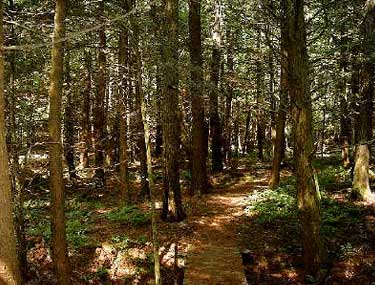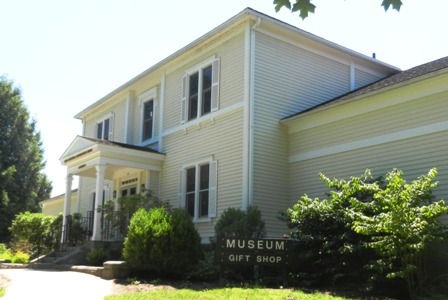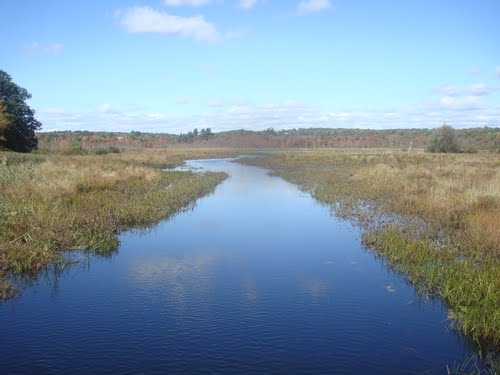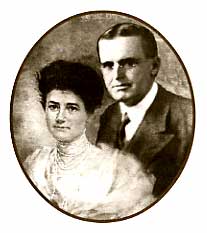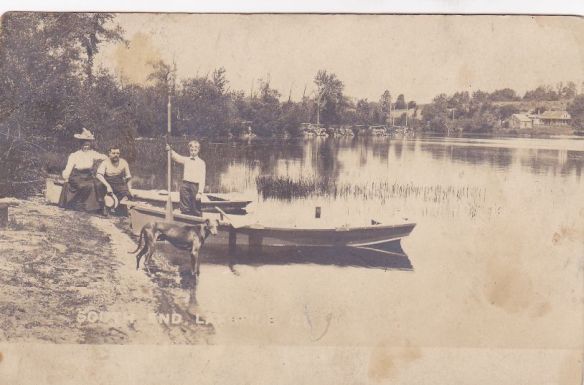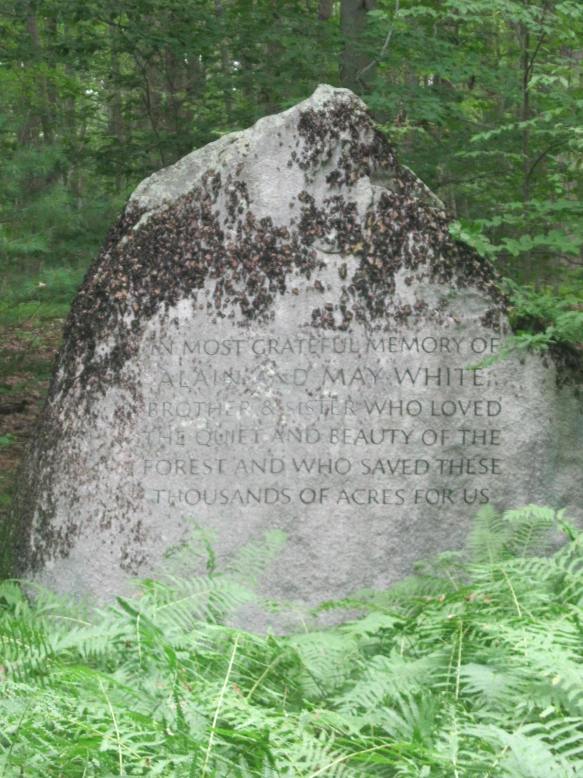Here is among the most hidden in plain sight of Litchfield’s many monuments and markers. How many hundreds, if not thousands, of hikers and bikers pass by this engraved boulder near the intersection of White Memorial’s Mattatuck and Beaver Pond trails without seeing it?
The boulder honors two of Litchfield’s most distinguished residents, Alain (1880-1951) and Margaret “May” (1869-1941) White. Together they preserved nearly 9,000 acres of land that today comprise the White Memorial Foundation, Mohawk State Forest and Mohawk Mountain State Park, Kent Falls State Park, Macedonia Brook State Park, the People’s State Forest, Campbell Falls State Park, and portions of the Steep Rock Preserve.
The Whites were the children of John Jay White, a New York City real estate magnate who built Whitehall, a Victorian summer estate in Litchfield that today is the main building of the White Memorial Foundation. Alain was educated as a botanist at Harvard in the era of Theodore Roosevelt’s presidency, a combination that may have led to his first impulses of conservation. (It is interesting to note that White was a champion chess player, who is credited in some circles with breaking the German code in World War I, which was based upon a pattern of chess moves.)
Fishing the Bantam River with his friend William Mitchell Van Winkle in 1908, Alain commented “Wouldn’t it be wonderful to preserve this river, lake and countryside as we see it now?” With his sister May he would devote nearly the next half century to acquiring additional lands for a preserve dedicated to the memory of their parents, including the Babbit farm along today’s Route 63, on which this boulder stands.
Their goal was not simply to allow nature to run its course on these lands, however; rather, they hoped to “make shoreline available for youth camps, simple vacation home and convalescent retreats” (Rachel Carley, Litchfield, p. 225). This, then, was practical conservationism. Nor were their philanthropic impulses limited to nature; Alain was deeply involved in the establishment of the Connecticut Junior Republic, and in fact collaborated with Cass Gilbert, the architect of New York’s famed Woolworth Building, on its design. He also wrote a detailed history of Litchfield in 1920.
May was a Sunday school teacher and avid theater aficionado who began a series of children’s performances at Whitehall, and who worked to turn the Lakeside Hotel into a summer getaway for children from New York City, a forerunner of the Fresh Air Fund.
Still, they are rightly best remembered today for their remarkable contribution of a 4,000-acre backyard for Litchfield, a refuge not only for animals but for hikers, bikers and kayakers. As real estate development infringes upon more and more open spaces, the words carved on the boulder are increasingly appropriate:
In most grateful memory of
ALAIN AND MAY WHITE
brother & sister who loved
the quiet and beauty of the
forest and who saved these
thousands of acres for us.
To find the monument, park in the small parking area near the intersections of Routes 63 and 61. Walk east on the Beaver Pond Trail (white blazes) until the trail intersects with the Mattatuck Trail (blue blazes). Follow the fork to the left, the Mattatuck Trail. The monument will soon appear, set in the woods on your left.


